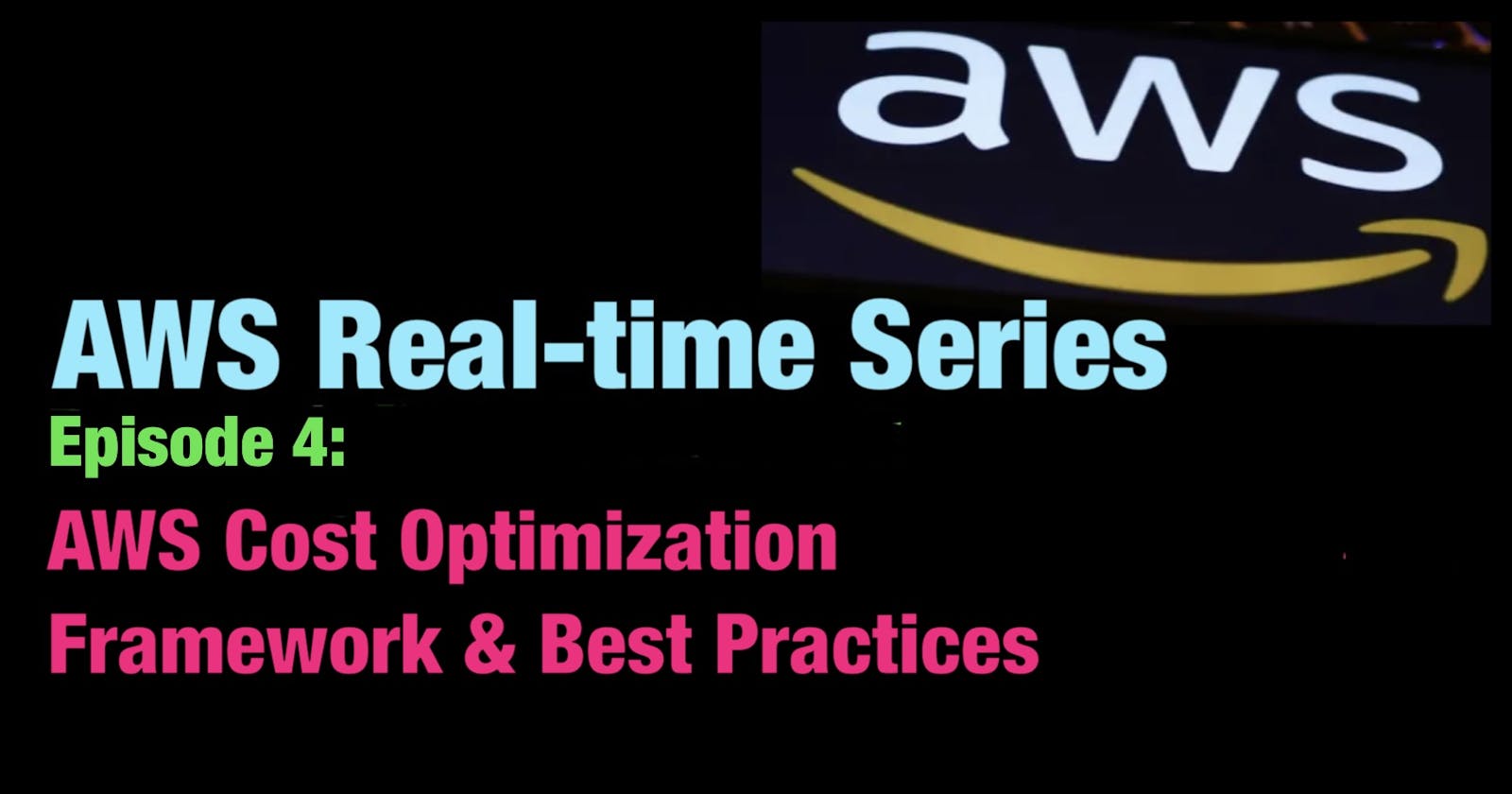The cost optimizing framework for AWS web services involves implementing strategies and best practices to optimize your cloud costs. Cost optimization is an ongoing process, and it’s important to regularly monitor, analyze, and adjust your AWS resources and services to ensure cost efficiency while meeting your application’s performance and availability requirements. Here are some key aspects to consider:
1. Right Sizing: Analyze the resource utilization of your AWS infrastructure and right size your instances, storage, and databases based on actual needs. Use tools like AWS Cost Explorer, AWS Trusted Advisor, or third-party cost optimization tools to identify underutilized resources.
2. Reserved Instances (RIs): Utilize Reserved Instances for long-term predictable workloads to save costs. RIs provide significant discounts compared to On-Demand instances. Analyze your usage patterns and consider purchasing Reserved Instances accordingly.
3. Spot Instances: Take advantage of Spot Instances for non-critical and flexible workloads. Spot Instances can provide substantial cost savings, but they can be interrupted with short notice. Use them for fault-tolerant applications or tasks that can handle interruptions gracefully.
4. Auto Scaling: Implement Auto Scaling to dynamically adjust resources based on workload demand. Scaling in during low traffic periods and scaling out during peak times helps optimize costs by aligning resources with actual usage.
5. Serverless Architecture: Leverage serverless services like AWS Lambda to pay only for the actual compute time and resources consumed by your applications. Serverless architectures can help reduce costs by eliminating the need to provision and manage infrastructure.
6. Data Transfer Costs: Optimize data transfer costs by leveraging AWS Regional Data Transfer, which allows free or lower-cost data transfer between services within the same AWS Region. Minimize cross-region data transfer or use services like Amazon CloudFront for caching and content delivery.
7. Cost Allocation and Tagging: Implement proper cost allocation and tagging practices to gain visibility into cost drivers and allocate expenses to specific projects or teams. This enables you to identify areas for optimization and enforce accountability.
8. Monitoring and Alerting: Set up cost monitoring and alerts using AWS Cost Explorer, AWS Budgets, or third-party tools. Regularly review cost reports, identify cost anomalies, and take proactive measures to optimize spending.
9. Continuous Optimization: Regularly review and optimize your infrastructure and architecture to adapt to changing business needs. Embrace a culture of continuous cost optimization by periodically evaluating resource usage, exploring new AWS offerings, and adopting cost-effective alternatives.
Real-time interview Q&A
As a DevOps engineer, how do you perform cost-optimizing framework for your infrastructure in AWS Web Services?
Answer: As a DevOps engineer, here are some steps you can take to perform cost optimization for your infrastructure in AWS Web Services:
1. Analyze Cost and Usage: Utilize AWS Cost Explorer, AWS Cost and Usage Reports, or third-party cost management tools to gain insights into your cost and usage patterns. Identify areas of high spending and potential cost-saving opportunities.
2. Evaluate Resource Utilization: Review the utilization of your AWS resources, including instances, storage, and databases. Identify underutilized or idle resources that can be optimized or terminated. Consider using AWS Trusted Advisor or third-party tools to gain visibility into resource utilization.
3. Right Sizing: In cost optimization, best practice area refers to the “Right Sizing” practice that is needed around your workload to ensure cost efficiency. This practice supports the workload in achieving Cost Optimization Pillar that analyzes the performance and utilization metrics of your instances and right size them accordingly. Downsize instances that are over-provisioned or upgrade instances that are consistently under heavy load. Use services like AWS Compute Optimizer or CloudWatch metrics to gather data for right-sizing decisions.
4. Reserved Instances (RIs): Identify workloads with predictable usage and consider purchasing Reserved Instances (RIs) for those instances. RIs provide significant cost savings compared to On-Demand instances. Utilize AWS Cost Explorer or third-party tools to analyze your usage patterns and determine the optimal RI purchases.
5. Spot Instances: For workloads that can tolerate interruptions or have flexible timing, leverage Spot Instances to take advantage of their lower pricing compared to On-Demand instances. Use Spot Fleet or Auto Scaling groups to manage Spot Instances and handle interruptions gracefully.
6. Serverless Architecture: Explore opportunities to adopt serverless services like AWS Lambda. Serverless architectures enable you to pay only for the actual compute time and resources consumed, eliminating the costs associated with idle resources.
7. Automation and Infrastructure as Code: Implement automation and infrastructure as code (IaC) practices to optimize your infrastructure. Use tools like AWS CloudFormation or AWS CDK to provision and manage resources consistently and eliminate manual configuration errors.
8. Tagging and Cost Allocation: Implement tagging strategies and utilize AWS resource tags effectively. Tags allow you to allocate costs to specific projects or teams, providing better visibility and accountability for cost optimization efforts.
9. Monitor and Alert: Set up monitoring and alerting for cost-related metrics using AWS Cost Explorer, AWS Budgets, or third-party tools. Create alerts for cost thresholds, sudden cost spikes, or unusual spending patterns. Regularly review cost reports and take action based on the alerts received.
10. Continuous Optimization: Treat cost optimization as an ongoing process. Regularly review and optimize your infrastructure, monitor new AWS services and features that can help reduce costs, and embrace a culture of continuous cost optimization.
Data driven review using insights from AWS Trusted Advisor
While running WAFR, certain areas in the conversation require preliminary data point before any tangible outcome can be achieved. This often leads to a longer path to resolution. The conversation can either leads to further discovery activity or work items that are non-directly resulting the intended outcome.
Conclusion
Cost optimization is a continuous effort, and it’s essential to regularly monitor, analyze, and adjust your infrastructure based on changing needs and new opportunities for cost savings.
Compiled by: Azizul maqsud
Reference: https://aws.amazon.com/blogs/mt/how-to-use-aws-well-architected-with-aws-trusted-advisor-to-achieve-data-driven-cost-optimization/
Thank You!
Stay Connected !!
https://www.youtube.com/channel/UCNwP7KEElaJ7cdDTLP-KbBg
https://www.linkedin.com/in/azizul-maqsud/
https://azizulmaqsud-1684501031000.hashnode.dev/
https://medium.com/@azizulmaqsud
